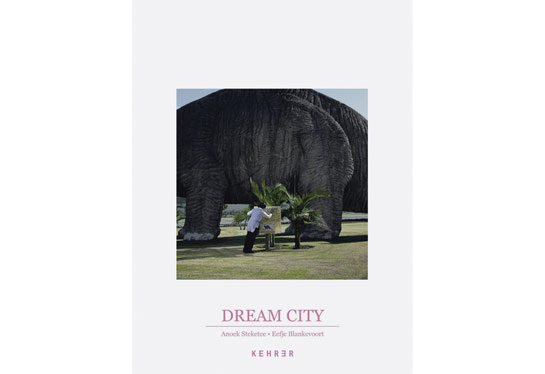Review: Dream City by Anoek Steketee and Eefje Blankevoort

There is an amusement park in Iraq called Dream City. There also is one in Rwanda, Bambino Super City. Turkmenistan has one, too: Turkmenbashi’s World of Fairy Tales. This is where being a photographer is considerably simpler than being a writer, because how do you, can you possibly react to all that in a world that loves nothing more than an unbiased view that, ideally, allows all possible readings? Well, good writers (not that I’m one) know what to do: They just ignore what people want and give their view no matter what. That is, after all, good writing. Bad writing, however, is starting a review of a book featuring amusement/theme parks all over the world by talking about good writing. So let’s talk about good photography instead, which, as it turns out, is easy since there’s quite a bit in Dream City by Anoek Steketee and Eefje Blankevoort (text). (more)
Introducing their project, they write
“From 2006 until 2010 we visited amusement parks in Iraq (Dream City), Lebanon (Beirut Lunapark), Israel (Superland), the Palestinian Territories (Funland), Rwanda (Bambino Supercity), Colombia (Hacienda Napoles & Jaime Duque), Indonesia (Dunia Fantasia), China (Nanhu & Shimlong), Turkmenistan (Turkmenbashi’s World of Fairy Tales) and the USA (Dollywood). […] During our travels, it became increasingly apparent to us that an amusement park is more than just a place to have fun; it often also plays a highly symbolic role. The origin, location and chosen theme of the amusement park offer meaningful insights into the socio-political situation of the country in which it is situated. Behind the subject’s innocent, light-hearted exterior lurks a darker, staged core, which raises questions about the way different realities can be depicted.”The first thing one notices when looking through the book is that the photography makes all these parks look almost indistinguishable. This makes for a slightly uncomfortable, borderline creepy, feeling: It’s almost as if reality was completely out of joint (for which, just as an aside, these days you don’t even have to go to an amusement park any longer - just switch on the news).
Those parks were constructed to entertain, to take their visitors’ minds away from the reality outside for the duration of the visit. That makes me wonder: What kind of entertainment is that? Or maybe I’m just the wrong person to look at these places? Entirely possible.
But one thing certainly seems to unite all of this, namely our species’ desire to escape, to construct a different world than the one we find ourselves living in. We want to be children again, or at least we want to act like children and find ourselves in our own Neighbourhood of Make Believe (minus the puppets, with some dinosaurs thrown in). For once, we want to walk through a dream land while being awake.
What that means you’ll see in Dream City. It’s a beautiful book, nicely designed, with great photography and smart writing, and it will probably surprise you: The idea of an amusement park will probably create certain expectations, and you won’t find them easily satisfied. Instead, Dream City goes deeper, beneath the surface of things. Recommended.
Dream City, photography by Anoek Steketee, text by Eefje Blankevoort, 168 pages, Kehrer/Fotodok, 2011